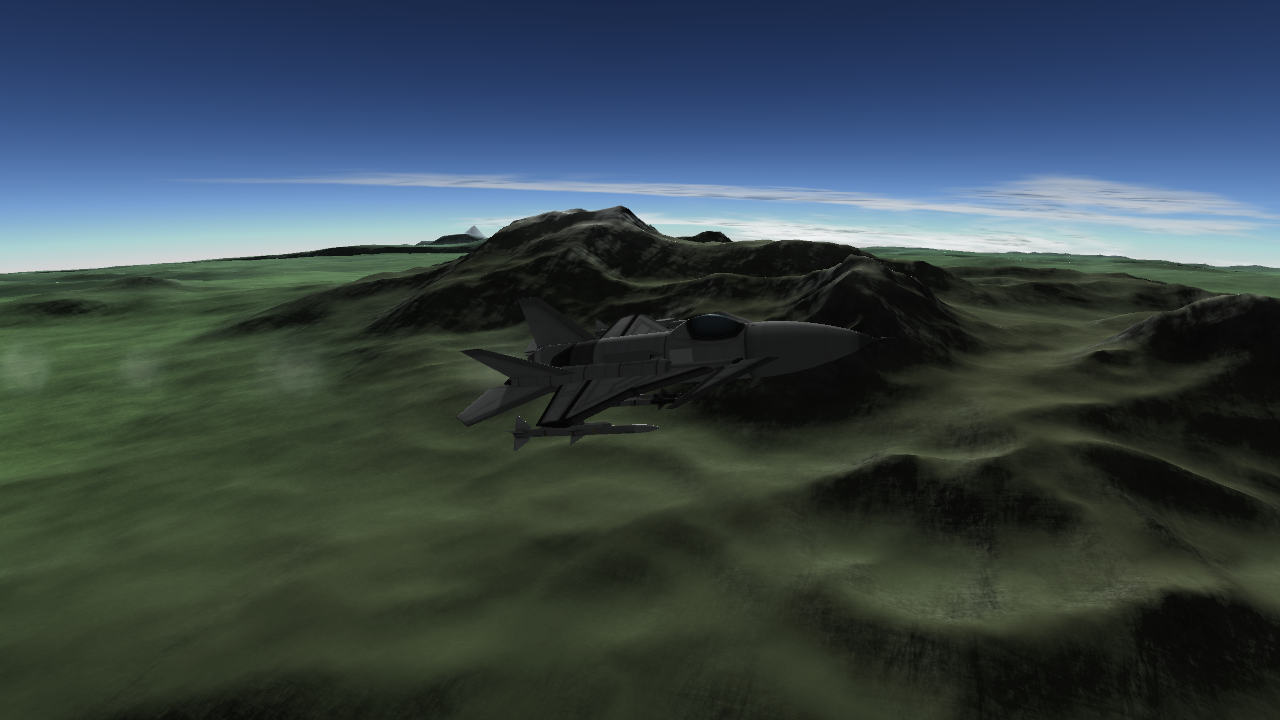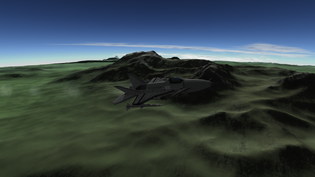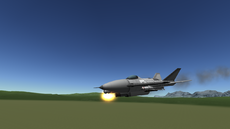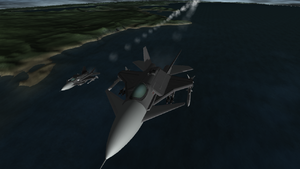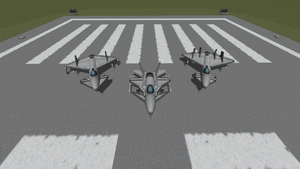F-10 Bumblebee
The F-10 Fighter, meant to replace the agin M-13 and K-1 fighter models in the OUAF and RDAF, is a light design modeled after the I-900 Wasp Interceptor and the A-10 Hornet Ground Attacker. After being inducted into the OUAF in early 2069, the DoD announced that the Owlian-built design would become the primary jet-of-choice as the Union Industries M-13 and K-1 models would begin being phased out starting 2070.
Development
Following the Delras Conflict of 2064, the OUAF realized the need for a light fighter capable of going toe-to-toe with some of the most advanced fighters on the planet. The Air Force hosted a contest of Owlian companies to see who would be awarded the contract to the X-10 program, and the somewhat new Rivera Dynamics won the deal with their small and well-priced design. Based off of the I-900 Wasp Interceptor that had seen service in the Sanctum War of 2065 and was in use with EAARS (Emergency Alert And Responce System), the light design incorperated small size with forward canards to increase maneuverability. The platform offered incredible advantages over other OUAF designs- Small enough to be easily stored in hangars, fast enough to engage other targets, and cheap enough to be produced in bulk. Prototypes were built in early 2068, with fine-tuning and improvements going all the way until December, when the craft was announced to the general public.
With its single engine, the fighter is more tuned to medium-to-long-range combat;
a fact helped by the droptanks of the F-10L design. At the beginning of production, Rivera Dynamics saw an opprotunity, and created the A-10 Hornet Ground Attacker- a design similar to the I-900, but with the F-10's engine and Air-to-Ground weaponry. The design is expected to serve alongside the A-11 Boar well into the 2080's.
Design
The F-10 incorperates the small shape of the I-900 to take advantage of a fairly small Radar Cross-Section (RCS), as well as a lower weight that translates into speed and maneuverability. The fighter itself incorperates a small main wingspan along with a forward canard and a rear tail fin to get incredible amounts of maneuverability. Both the tail fin and vertical stabilizers are placed on a long fuel fuselage/pylon that extends out past the engine. These pylons hold an extra 400 units of fuel, that extend range and balance out the Center of Mass (COM). Early models had a poor COM/COL balance that resulted in the plane having poor maneuverability or going into flat-spins. This was fixed by moving the wings around to various different areas, as well as modifying the location of the twin-20mm cannons behind the cockpit. The small fighter is one of firsts. It is the first single-engine fighter to break a 2-hour flight prediction. It is the first to incorperate slanted yaw stabilizers. It is the first to have a main wing, tail fin, and single forward canard. And the first plane to have its frame used for 3 different purposes.
Initially, the F-10 had 4 AMRAAM Missiles as well as 4 Sidewinder Missiles on the wings. However, this proved to add significant mass and cost, which would worsen the takeoff roll of the craft and make it harder to mass-produce.
Following test flights to and from the Owlian state of Delras, pilots noted a worrying lack of fuel near the later stages of the flight. This complaint was dealt with accordingly by Rivera Dynamics- the age-old solution of what to do when you need more fuel: Drop Tanks. The F-10L. The design incorperated the new L-100A Drop Tank to be placed near the front of the main fuel pylons- decoupling after use. The location of the AIM-9 missiles were moved over slightly to allow seperation room in case the missiles were fired before the drop tanks were released.
More updates came when the aerodynamic features of the FU-28 Hyper-Fighter were analyzed. The question asked all around the OUAF and Rivera Dynamics plants was, "How can we make the F-10 more maneuverable than before?" The answer was easy. After adding wing plating onto the sides of the plane, the F-10S model was far more maneuverable and advanced than any other variant. Incorperating an aerodynamic edge that's placed on the fuel pylons, the fighter has a sleeker look, as well as a combat edge.
History
Following a quite successful debut, many asked, "What next?" The Fighter was very young and promising, but it would be competing with the M-13 and K-1 for the spot of "Go-to Aircraft" for the OUAF.
And then, in early 2069, the Owlian Department of Defense announced that the F-10 would begin the replacement of the two aging fighters. The fighters were immediately put to the test, as threats from the Dust Harvest (A terrorist organization near Spice) meant an increased amount of patrols and airborne training missions that got the young fighters quickly prepared for the future fight.
Variants
F-X Bumblebee (AKA: X-10):
Prototype model. Not used in service- now used as statue/model at Rivera Dynamics' headquarters in Bradley, Owlia.
F-10:
Base model outfitted with 6 AAMs and 2 cannons. (In service with OUAF, RDAF, and BIPF)
F-10L:
Outfitted with two drop tanks that dramatically extend range. (In service with OUAF and RDAF)
F-10S:
The S variant has wing plating connecting the pylons and the main fuselage, increasing maneuverability and adding a sleek look to the fighter jet. (In service with the OUAF and RDAF; not for sale)
F-10SII:
Same F-10S design, but with air brakes on the sides to allow it to join formations smoother and easier. (In service with OUAF and RDAF; not for sale)
F-10E:
Export model of the F-10. (In service with the TEST Air Force)
F-10LE:
Export model of the F-10L.
Planned Models:
F-10AS:
Stealth/Electronic Warfare variant of the F-10. Expected Delivery: 2070
F-10R:
[Classified by Rivera Dynamics]. Expected Delivery: [Unknown]
F-10V:
Carrier VTOL variant. Expected Delivery: [Unknown]
